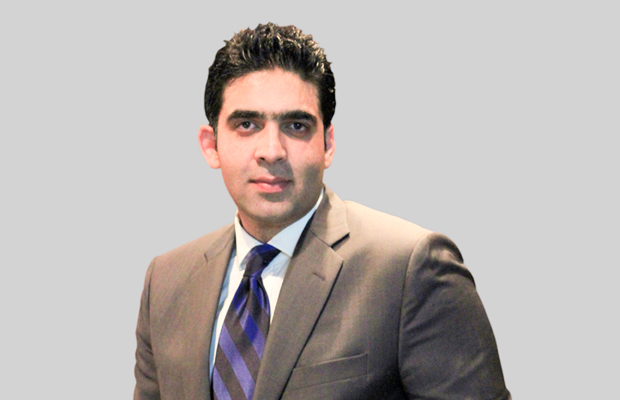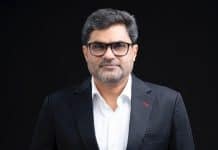The storage industry is in a state of change and traditional storage is giving way to more innovative approaches such as software-defined storage. Since no one solution fits every need, having a broad portfolio is necessary, and nobody has a portfolio of the scope of Western Digital Corporation. In an exclusive conversation with Nivedan Prakash, Khalid Wani, Managing Director Sales, Western Digital Corporation, India shares the company’s India specific plans and opportunities and how WDC plas to maintain its leadership positio in the country.
How bullish is WDC about the Indian market?
Earlier, we had created a region comprising of Middle East, Africa, and India combined. And we had termed it as an emerging market. Interestingly, in one of the recent developments, we have decided to craft out India as a region by itself and we will be directly working with the corporate. This signals a very strong shift in terms of our strategy, focus, and the attention that the organization wants to have on India as a market. It is because we predominantly believe that India will be one of the fastest growing markets for WDC and its entire product line – be it consumer, enterprise, OEM, surveillance, or datacentre.
For us, India has been on a growth trajectory for the last couple of years both from WDC as well as SanDisk perspective. Any vertical that we are currently operating in India, we see a very strong opportunity to grow. Besides, we believe that the country has the potential to drive its own go-to-market strategy and the right support from the Corporation in terms of resources and investments would actually help us execute the GTM strategy in India. Moreover, the merger and integration of SanDisk business within our ecosystem helped us to scale and create a high growth model here.
In the last 18 to 24 months, we have seen strong growth in our surveillance business due to the Indian government’s increased focus on smart city projects. The consumer space is another critical growth area for us driven by the huge penetration of smartphones and content generation. In terms of product category, we have witnessed good growth of the dual drives that can be used as both USB as well as storage device. At the top of it, the rising demand from the enterprise space is going to further help us drive different growth verticals in India.
You mentioned about the smart city projects. How strong are you in that space or are you still exploring or in talks with different government agencies?
Smart City is a fabulous initiative and as an organisation we believe that our product line would help add a lot of value in building infrastructure for smart cities, especially in the security and surveillance space. At this point of time, we have a fairly decent level of engagement with the government. Besides, we continue to have our teams to work on strategic alliances and partnerships in the SMB and the enterprise space that is being pushed or supported by the government. The fact that the initiative of Smart City has kicked off on a good note and the government is serious about it will help us expand our horizon. From the overall initiative perspective, it’s a step in the right direction and as an organisation, we will continue to support the government wherever we can.
WDC is seen as a strong player in the surveillance space. Besides the smart city projects, where else do you see the opportunities lying in his domain?
If you look at the surveillance industry per se and the opportunities associated with it, it’s not only smart cities driving this space. Smart city is a very small portion of this particular segment. The whole surveillance space is driven by every other vertical, whether it is the enterprise, corporate, or end user space. One of the key areas that continues to grow in the surveillance is the consumer space, wherein you will find a lot of end users wanting to have a much more reliable security and surveillance system built at home. If you collectively look at all these segments – government, private or public private enterprise, high end residential areas, individual users – everybody is concentrating very heavily on surveillance and security.
I believe it’s going to be in every vertical that you can find an opportunity to grow. And from the technology perspective, our Purple line of products, is considered to be one of the best available in the surveillance space. Besides, we keep on working towards product enhancements to offer best-of-the-breed solutions to the market.
Since the company has identified India as one big potential market for its growth, has this called for a realignment in your go-to-market strategy?
Usually as an organization, we do not share our go-to-market strategy. But I can tell you that from the organisational perspective, we have made some realignments post the integration of SanDisk business. We did it to make sure that we have the right resources available to cater to the right segments in the market. For us the importance of India as a market is very critical and our investments in the country continue to be strong. We have a very strong R&D centre based out of Bangalore. Now, we will focus on expanding our team and create pillar to pillar strength in India to ensure that we have a very strong core built here. And our go-to-market strategy will revolve around this approach. We just want to make sure that we are a very strong player in our domain and the largest (post the acquisition) as well as best storage company in India. And the focus would be on creating a robust value system for the customers.
In your bid to become the number one storage player in the Indian market, what sort of road blocks being faced by the company in this journey?
There are always external factors through which you have to navigate around in different markets. It could be related to the whole demography and, as you rightly pointed out, India has such a large demography that it brings a lot of complexities with itself in the way you build your business to make sure that you are able to fulfil and cater to the tier 2, 3 and 4 cities in India. Creating an ecosystem where you have touchpoints for consumers to reach out to you is always a challenge and I am just talking about a particular segment and similarly you will find a lot of challenges in various other environment.
But having said that, I think as a company we have been able to successfully navigate around it and build the right model which allows us to cater to those complexities and roadblocks which are out there. We will keep finding these tactical, time bound, and economic challenges but as a company, we will always strive to overcome them. I personally feel that irrespective of these roadblocks – short term or long term – the sheer fact that India is one of the fastest growing economies in the world gives you no other reason not to believe that this is the growth market to target.
How are you enabling your channel ecosystem towards the disruptive technologies so that they are able to go and deploy the solutions to the end consumers especially the enterprise segment and medium and small businesses?
So most of the data center kind of setups that we have as you rightly said that particular space is evolving and a lot is happening on the software side and software deployed services are coming in. I think for us one of the areas that we consistently work on and I talked to you about it our channel engagement continues to evolve from the traditional channel that we always catered too now we are moving into an environment where we are working a lot and we are promoting a lot for are partners to continue working with system integrators, system builders, value sellers who operate in that space so that we can continue to offer them the right product for the right setup that these guys are creating. We have to make sure that we engage slightly differently in that space and ensure that we put the right set of people to drive that business but that is not the focus area that we are looking at the moment.
What’s the current channel ecosystem like, especially post the integration with SanDisk, was it a smooth transitioning because they had their own set of partners who were doing business, so how has the integration been and what is the current setup like?
Absolutely seamless, I think in India as a market one of the benefits that we had which basically did mean that we did not have to spend a lot of time on that particular segment. It’s because we had quite a few of our distributors which were the same, we had the same set of partners and distributors so it was very easy to align them together. It was not that critical of a problem for us in India as a market.








